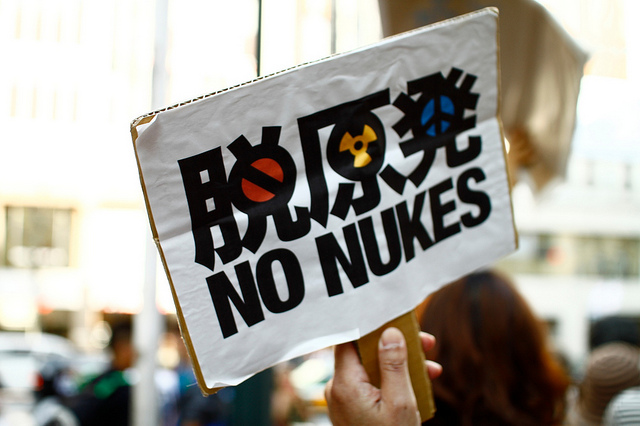In a recent commentary in The National Interest, titled ‘Let Asia go nuclear’, Harvey Sapolsky and Christine Leah outlined a case in favour of the US accepting nuclear proliferation by its allies in the Asia Pacific. The core of their position is that the allies have opted for US nuclear assurances and conventional protection because those are cheaper than constructing their own nuclear arsenals. They suggest that ‘tailored proliferation’ by US allies would ease US burdens and simultaneously allow the states in question to enjoy clearer protection from their own indigenous nuclear arsenals than they do under the existing ‘extended deterrence’ arrangements. And they believe such proliferation wouldn’t be destabilising, because US allies are responsible stakeholders in the regional and global order, and none would be in any hurry to lob a nuclear weapon at anyone else.
Let’s put aside the assertion that the allies chose extended nuclear assurance because it was cheaper—though I don’t believe that was the primary motive for any of the countries. And let’s assume there’s a domestic consensus in each of the allied states to move down the nuclear path—an assumption that might be a bridge too far in the case of South Korea, is a bridge too far in the case of Japan, and several bridges too far in the case of Australia and others. I’m more interested in what happens afterwards—when, say, Japan, South Korea and Australia have proliferated. Surely, the central question must be ‘Can the proliferation chain be terminated at that point?’ Thailand and the Philippines might begin to wonder if they should proliferate too, since other US allies are doing so. And Taiwan, which enjoys a security relationship governed by the Taiwan Relations Act rather than an actual treaty, might begin to harbour similar worries. As for other countries in the region, Indonesia might look askance at Australian proliferation. And Vietnam, living on China’s border, might think it should also begin considering a nuclear option.
And that’s just Asia. But the nuclear world is so finely balanced now that once status quo states begin to proliferate in one region they entice similar states down the nuclear path in others. In the Middle East, for example, Saudi Arabia, Egypt and Turkey might figure that it pays them to cross the Rubicon with the herd rather than by themselves at some later date. And if some of the newer NATO members in Eastern Europe were to watch the US walk away from its extended nuclear assurances in Asia—especially after seeing Russia tighten its grip on Ukraine—they might well conclude that it would be timely for them to do the same.
There are currently nine nuclear weapon states in the world: five within the NPT (US, Russia, China, Britain and France) and four outside it (Israel, India, Pakistan and North Korea). Adding three more status quo powers to the list, though, doesn’t give us a stable saddle-point. When a US Defense Science Board (PDF, p. 1) report on nuclear monitoring and security was published a few months ago, it opened with the observation that the world currently stands on the brink of possible nuclear proliferation in numbers not seen since the early days of the Cold War. If that wave does run through early 21st century geopolitics, we will—simply—live in a different world order.
Not only would there be more fingers on more triggers, the US incitement to its Asian allies to move beyond extended nuclear assurance arrangements would weaken such assurances elsewhere—and there are nearly forty of them worldwide. Just as concerning, some states—both adversaries and allies—would read in the US action a faltering in the stride of the dominant world power.
All of those concerns mean there has to be a better way of addressing nuclear anxieties in Asia than the US telling its allies to go nuclear. Better, for example, if there were some renewal and strengthening of US extended nuclear assurances in the region, some adaptation of the current ‘reach-back’ US nuclear posture (under which US nuclear weapons aren’t forward-deployed in the region), and a gradual enhancement in ‘nuclear latency’ in places like Japan, South Korea and Australia. (Nuclear latency is a term meant to cover the steady growth in nuclear-related skills and the increasing deployment of potential delivery vehicles in regional arsenals.) That could all be done without opening Pandora’s box. But I suspect the ‘Let Asia go nuclear’ prescription is less likely to calm the waters of the Pacific than its authors suggest.
Rod Lyon is a fellow at ASPI and executive editor of The Strategist. Image courtesy of Flickr user Matthias Lambrecht.


